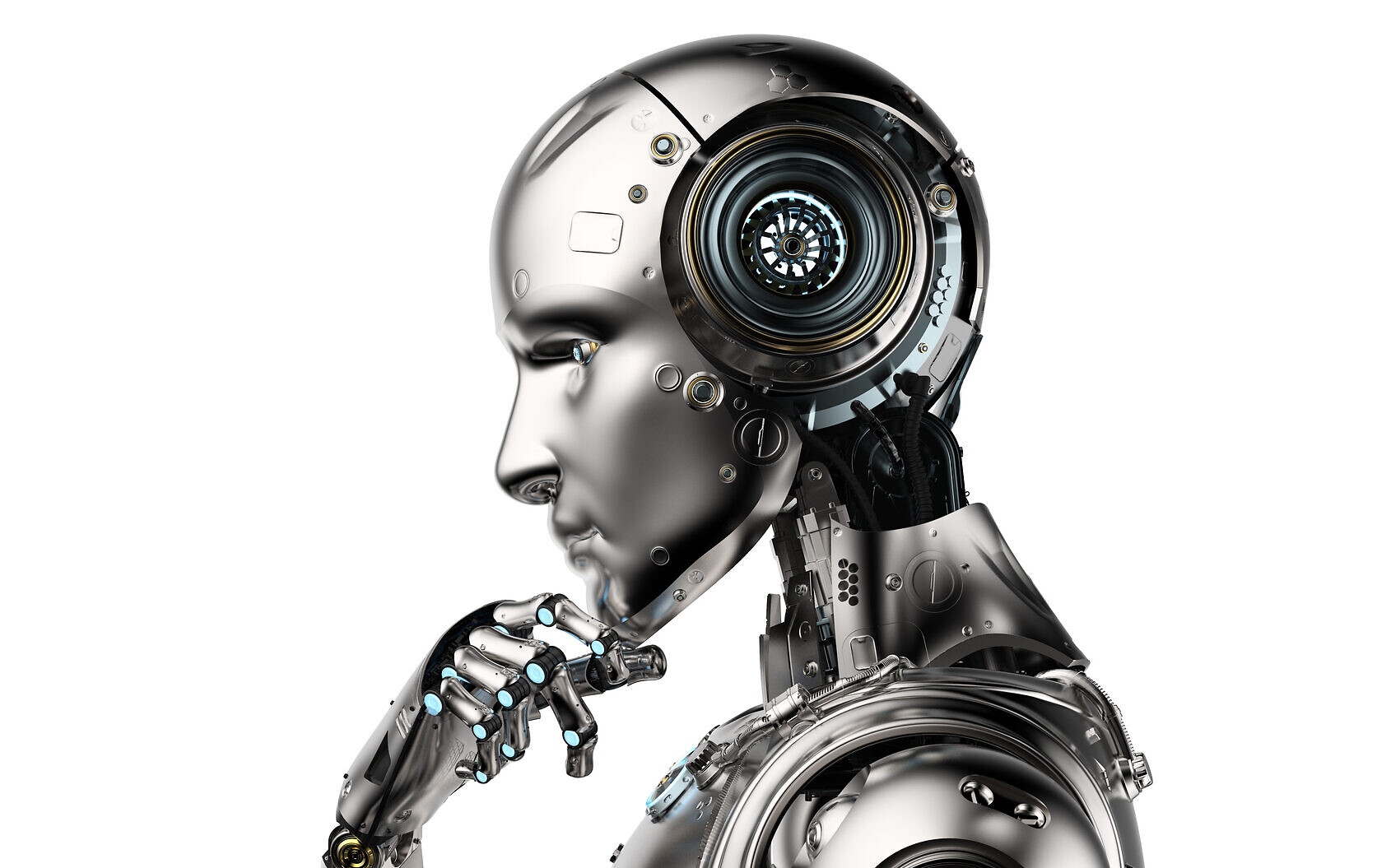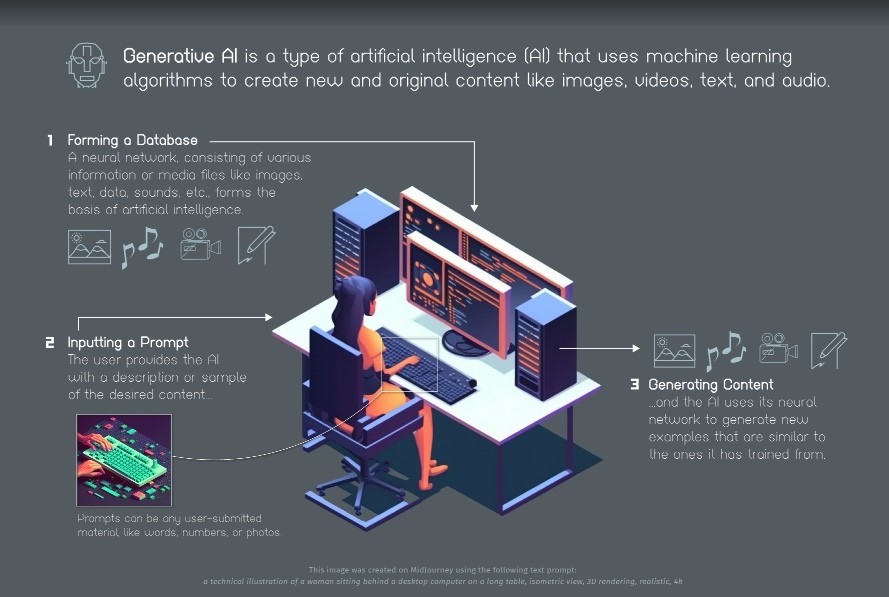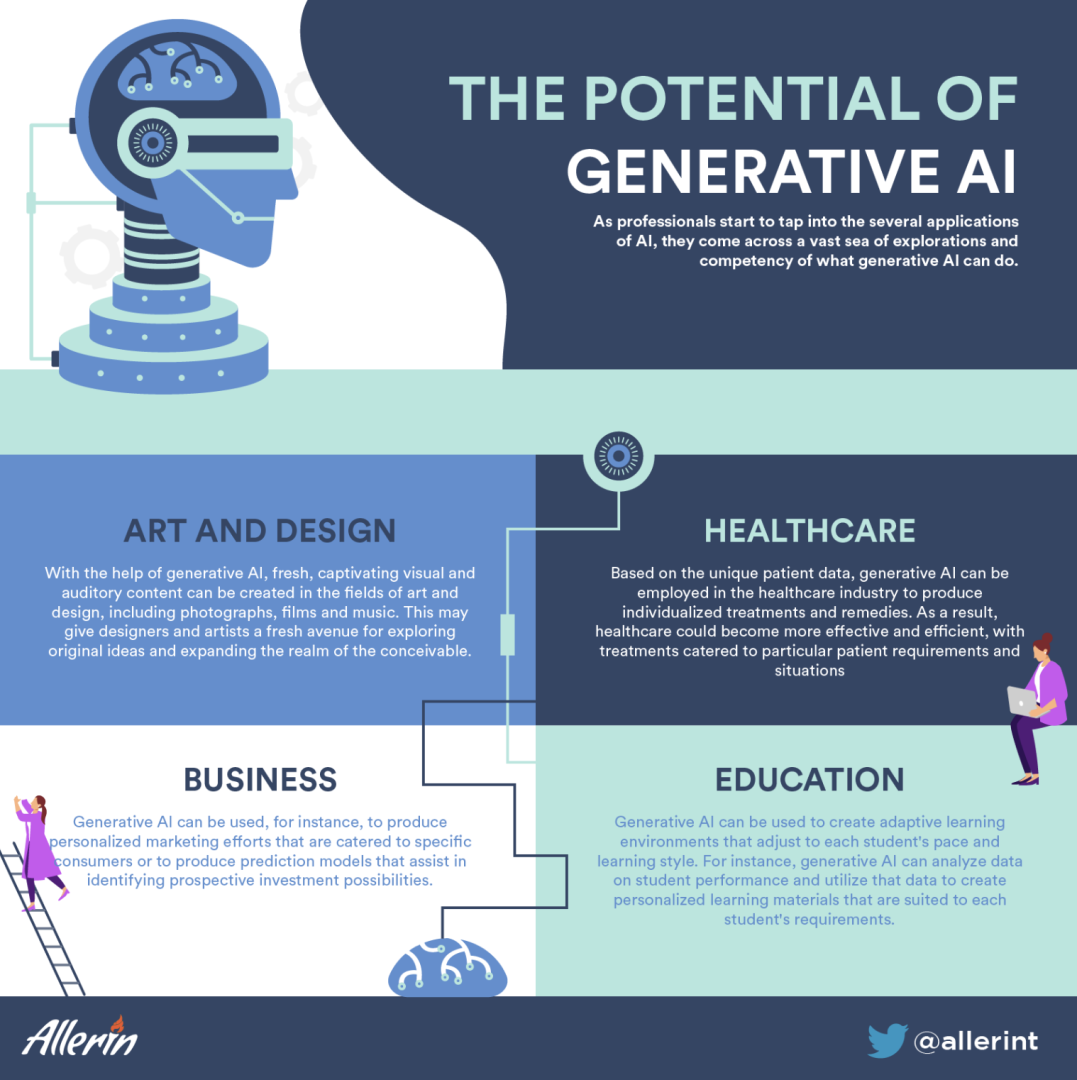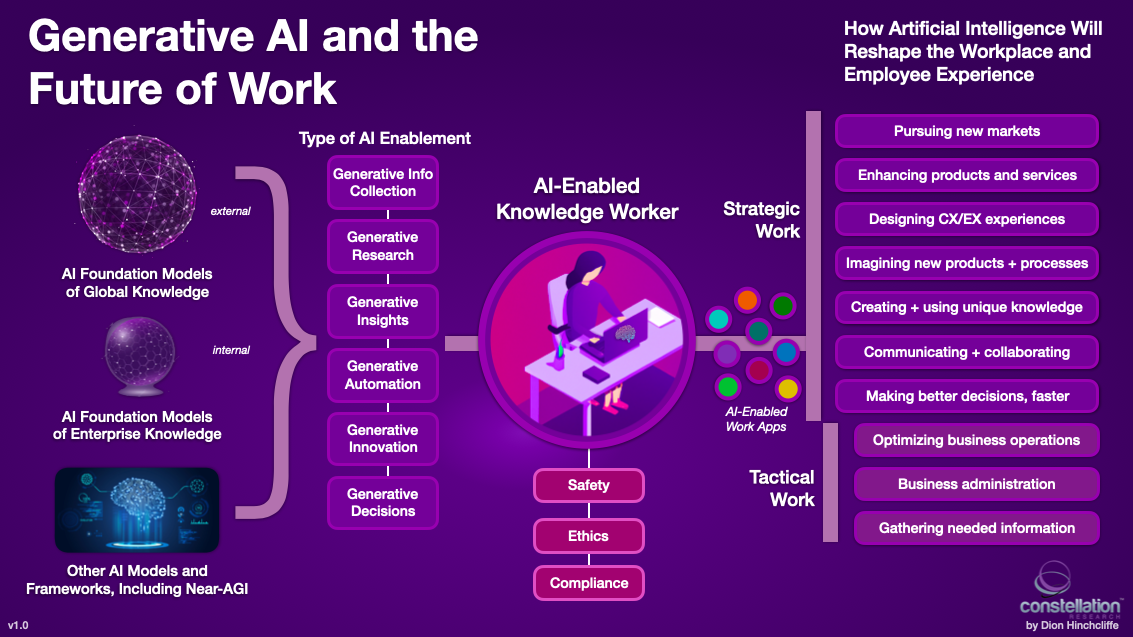Comments
- No comments found

Generative AI is transforming various sectors by automating repetitive tasks and providing innocative ideas.
It is also improving efficiency and productivity across various fields while creating new opportunities for innovation and discovery.
The online and digital community is blooming with AI-generated art, images, videos, music and other forms of original content.
Occasionally, one sees an interesting caricature of a renowned human, solely generated through AI and circulated over the internet. These forms of content on the internet are crafted through generative AI.
Generative AI is a subfield of artificial intelligence that focuses on creating new and original content using algorithms and machine learning techniques. The goal of generative AI is to create outputs that are both novel and diverse, while also being high quality and relevant to the task at hand.

The rise of generative AI has ushered in a new era of artificial intelligence, where machines can create new and original content. From generating realistic images and videos to crafting music and literature, the possibilities of generative AI seem endless. Generative AI analyzes large amounts of data to identify patterns and create a model of the underlying structure. This model can then be used to generate new content that is similar to the data it was trained on.
Generative AI uses machine learning as a key component of functioning. Machine learning involves training a model on a large dataset to learn patterns and make predictions based on that data. Generative AI uses a subset of machine learning called "generative modeling," where a model is trained to generate new data that is similar to a given dataset.
The majority of the time, massive datasets of existing content, including photos, text or audio, are used to train generative AI models. The model examines the patterns in the data and uses them to produce new information related to the original data but not exactly the same. The generative AI model can then modify its output in response to input, thereby increasing its precision and originality.
One popular approach to generative AI is using generative adversarial networks (GANs), which involve two neural networks competing with each other to create realistic and original content. Another approach is through the use of autoregressive models, which generate content one piece at a time based on previous output.

One of the many such emerging generative AI is ChatGPT. This AI-powered language model can assist with a variety of activities, including text generation, question answering and language translation. Providing prompt and correct responses to consumer inquiries, it can assist organizations in enhancing customer service. ChatGPT also helps with schooling by giving pupils individualized learning opportunities. To improve student learning, it assesses student feedback and modifies its teaching approach accordingly. Moreover, ChatGPT assists those who have trouble speaking because of linguistic obstacles or physical limitations, making communication more inclusive and accessible.
Another AI model that has taken the world by storm is Dall.E. This text-to-image generative AI system generates images of virtually anything based on textual input, which could revolutionize fields such as advertising, design and manufacturing. For example, it could help advertisers create highly targeted and personalized ads that resonate with customers. It could also help designers quickly visualize ideas and create prototypes, reducing the time and cost of product development. Moreover, DALL-E has the potential to create highly realistic and detailed images that could be used in scientific research and education.

As professionals start to tap into the several applications of AI, they come across a vast sea of explorations and competency of what generative AI can do.
With the help of generative AI, fresh, captivating visual and auditory content can be created in the fields of art and design, including photographs, films and music. This may give designers and artists a fresh avenue for exploring original ideas and expanding the realm of the conceivable.
Based on the unique patient data, generative AI can be employed in the healthcare industry to produce individualized treatments and remedies. As a result, healthcare could become more effective and efficient, with treatments catered to particular patient requirements and situations.
With applications in industries like banking and marketing, generative artificial intelligence has the potential to dramatically alter how we do business. Generative AI can be used, for instance, to produce personalized marketing efforts that are catered to specific consumers or to produce prediction models that assist in identifying prospective investment possibilities.
Generative AI can be used to create adaptive learning environments that adjust to each student's pace and learning style. For instance, generative AI can analyze data on student performance and utilize that data to create personalized learning materials that are suited to each student's requirements. Moreover, in order to construct evaluations that appropriately challenge students, generative AI, for instance, can produce questions depending on the student's prior performance.

Source: Constellation Research
While generative AI has the potential to revolutionize many fields, it is important to consider these potential demerits and to develop appropriate ethical and regulatory frameworks to mitigate their impact. For instance, generative AI models, such as ChatGPT, can be biased if they are trained on datasets that are not representative of the entire population. This can lead to inaccurate or unfair results, particularly in areas such as healthcare, criminal justice, political debates and hiring, where generative AI is used to make important decisions. Furthermore, the skillsets that humans possess can be adapted by generative AI, resulting in the need to keep up with the technology. However, it is important to note that generative AI is not designed to replace humans entirely but rather to augment their abilities and improve efficiency.
Generative AI can automate repetitive and time-consuming tasks, freeing humans to focus on more complex and creative work that requires human judgment and creativity. For example, generative AI can be used to automate tasks such as data entry, image tagging and customer service. In such cases, generative AI can improve productivity and efficiency while reducing errors and costs.
It is important for businesses and governments to consider the potential impacts of generative AI on the workforce and to develop appropriate policies and training programs to help workers transition to new roles or acquire new skills.
Naveen is the Founder and CEO of Allerin, a software solutions provider that delivers innovative and agile solutions that enable to automate, inspire and impress. He is a seasoned professional with more than 20 years of experience, with extensive experience in customizing open source products for cost optimizations of large scale IT deployment. He is currently working on Internet of Things solutions with Big Data Analytics. Naveen completed his programming qualifications in various Indian institutes.
Leave your comments
Post comment as a guest